For Authors
INSTRUCTIONS FOR AUTHORS OF „CULTURAL STUDIES APPENDIX"
All articles published in the journal undergo double-blind peer review process. Please send your manuscript to: zalacznikkulturoznawczy@gmail.com
Instructions for Authors of „Cultural Studies Appendix”
1. Electronic version of the text (text file in .doc or .docx format) should be sent to the
following address: zalacznikkulturoznawczy@gmail.com
2. Times New Roman font, size 12, line spacing 1.5, all margins - 2.5.
3. At the beginning of the text the following informations should be places:
→ name and surname of the author of the article;
→ affiliation in Polish and English;
→ email address;
→ ORCID number;
→ article title.
4.Titles of books, articles, films, theater performances, etc. are written in italics. Magazine titles in simple quotation marks.
5. In the main text, after a given person is mentioned for the first time, we use initials.
6. Numerals are written in words, respecting the principle of economics (e.g. „twelve people”,
but „1,865 people”).
7. Short quotes are placed directly in the text, in quotation marks; longer (more than four lines)
or particularly important ones – in separate paragraphs, with font size 10. We use a gap
between the quote and the main text (at the top and bottom of the quote), in this case we do
not use quotation marks.
8. Top and bottom quotation marks should be used (i.e. „abc”, not "abc"); the so-called „»German«
quotation marks” are used for internal quotes; omissions are marked with an ellipse in square brackets
[…]; we write the inclusions in square brackets.
9. We write foreign words and phrases in italics.
10. We use emphasis in quotes in moderation. We apply them by using the automatic print
explode function (2.5 points).
11. Bottom footnotes are in use (font 10 p.) According to the following formula:
→ books: initial, surname, title, translator, city + year of publication, page number.
U. Eco, Confessions of a Young Writer, trans. J. Korpanty, Warsaw 2011, p. 33.
→ chapter in a collective work: initial, surname, chapter title, translator, [in:] title of the
collective work, editor, city + year of publication, page number.
A. Konopacki, Iconography of Pre-Raphaelite Painting. Selected aspects, [in:] Themes,
Traditions and Theories in the Art of the Romantic Era, ed. J. Białostocki, Warsaw 1981, p.
124.
→ journal article: initial, surname, article title, translator, „journal title”, year of publication,
volume, number, page number.
A. Morstin-Popławska, The History of a Certain Illusion. Theories of Kitsch and „The Double
Life of Weronika”, „Kwartalnik Filmowy” 2009, Vol. 17, No. 66, p. 79.
→ In the case of internet sources, we also provide the website address (with the hyperlink
removed) and the date of access:
http // www.gazetawyborcza.pl/ [accessed: 12.07.2018].
The following abbreviations are used in the footnotes: ibid., op. cit., see
12. Bibliography should be prepared in alphabetical order (according to the names of the
authors), in which we write the full form of the author’s name and the abbreviated name of
the publisher (if applicable). All references from the footnotes should be included in the
bibliography.
13. Illustrative materials are sent in separate files, appropriately numbered (according to the
order in which they appear in the article), with the highest possible resolution.
Additionally, in a separate text file, we send a list of illustrations with the given titles and
sources (in the case of images from the Internet, we also provide the date of access; authors
are obliged to inform the editors about the legal possibility of using the images sent).
In the main text, we indicate the preferred location of the illustration with the highlighted
annotation (fig. 1), (fig. 2), etc.
14. The article should be accompanied (at the end or in a separate file):
→ abstract in English (approx. 3000 characters; the abstract should be impersonal, concern
the general issues of the dissertation, the adopted research methodology and synthetically
present the most important theses).
→ keywords (4-7) in English.
The article will be accepted for publication, if it is approved by the Editorial Board and
Reviewers. These persons may indicate the need to shorten a given text or to introduce
corrections.
English


